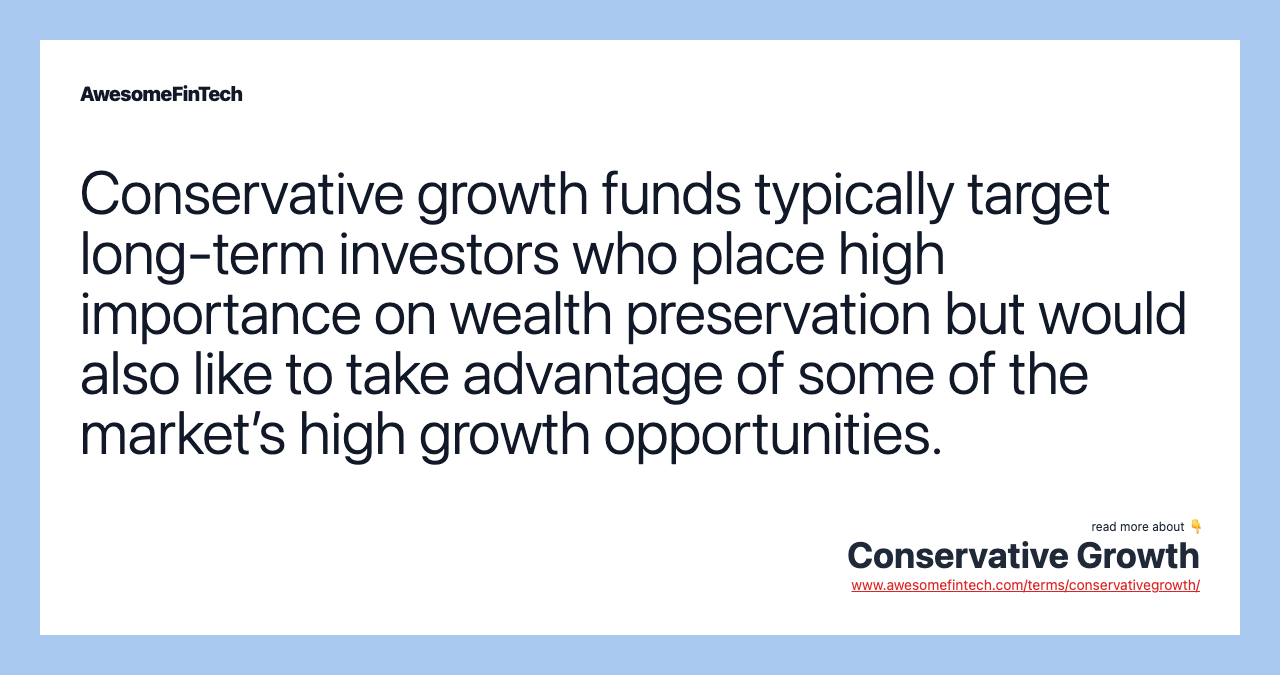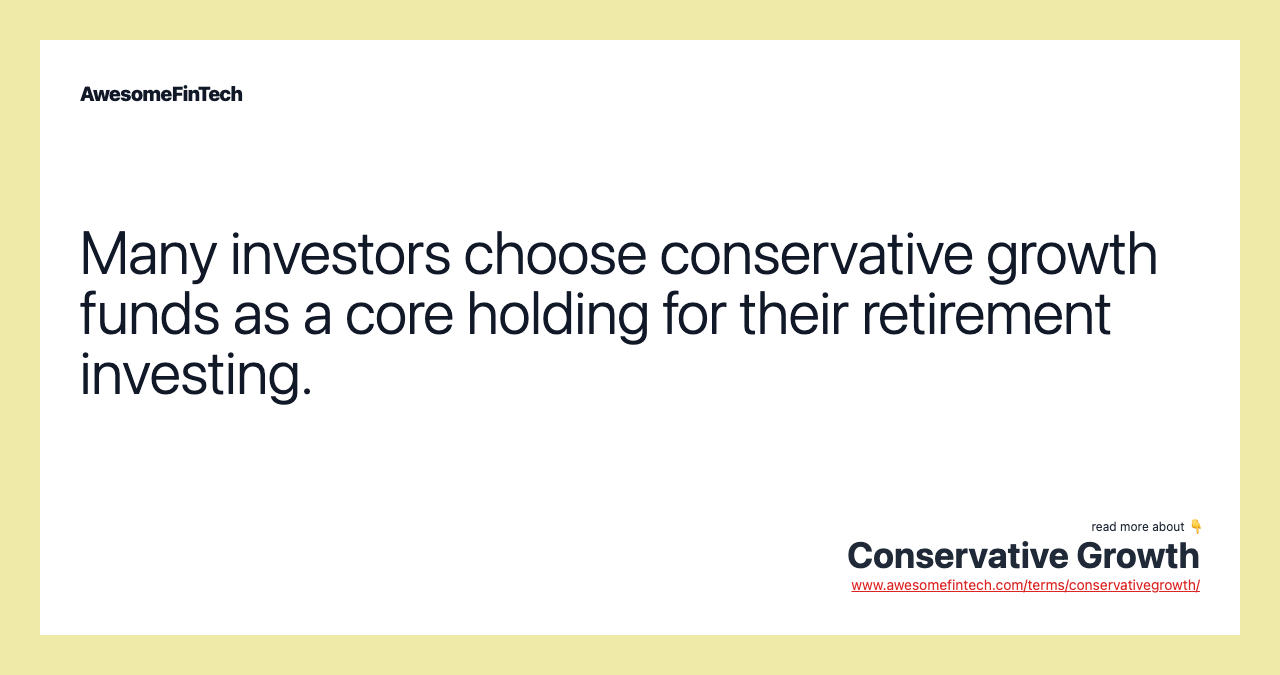Conservative Growth
Conservative growth is an investment strategy that aims to grow invested capital over the long term. It uses a fund-of-funds approach, with its top equity allocation to the Vanguard Total Stock Market Index Fund Investor Shares at 24% and its top fixed income allocation to the Vanguard Total Bond Market II Index Fund Investor Shares at 42%. Many investors find the potential returns of aggressive growth funds appealing. Rather than investing nearly 100% of the portfolio in growth or aggressive growth stocks, these portfolios take a more conservative approach by investing with a high allocation of fixed income and a smaller portion of the portfolio in growth stocks. Conservative growth funds usually allocate a high percentage of the fund to fixed income while investing the remaining allocation in growth or aggressive growth stocks. Conservative growth funds typically target long-term investors who place high importance on wealth preservation but would also like to take advantage of some of the market’s high growth opportunities.

What Is Conservative Growth?
Conservative growth is an investment strategy that aims to grow invested capital over the long term. These funds typically target long-term investors who place high importance on wealth preservation but would also like to take advantage of some of the market’s high growth opportunities. Conservative growth funds usually allocate a high percentage of the fund to fixed income while investing the remaining allocation in growth or aggressive growth stocks.



Understanding Conservative Growth
Conservative growth funds can be attractive to investors for a few different reasons. Many investors will use conservative growth funds as a core holding. They are also appealing to investors with a more conservative investing style. They can also be considered a lifestyle fund, which makes them a good investment for investors seeking a core portfolio in which to save for retirement.
Many investors choose conservative growth funds as a core holding for their retirement investing. For conservative investors, they offer a high allocation of low-risk fixed income investments while still offering the potential for substantial capital gains. These funds are often considered as a lifestyle fund option and can sometimes be compared to target-date funds because of their balanced approach, however, their allocations do not shift over time.
Vanguard offers one example of a core conservative growth fund in its LifeStrategy series. The Vanguard LifeStrategy Conservative Growth Fund is one of four offerings in the LifeStrategy series, with the other options including the LifeStrategy Income Fund, LifeStrategy Moderate Growth Fund, and LifeStrategy Growth Fund.
The Vanguard LifeStrategy Conservative Growth Fund holds approximately 40% of the portfolio in stocks and 60% in bonds. It uses a fund-of-funds approach, with its top equity allocation to the Vanguard Total Stock Market Index Fund Investor Shares at 24% and its top fixed income allocation to the Vanguard Total Bond Market II Index Fund Investor Shares at 42%.
Aggressive Growth vs. Conservative Growth
Many investors find the potential returns of aggressive growth funds appealing. However, they are not willing to take on aggressive risks. For these investors, conservative growth funds can be a good alternative. They offer the benefits of a diversified portfolio. Rather than investing nearly 100% of the portfolio in growth or aggressive growth stocks, these portfolios take a more conservative approach by investing with a high allocation of fixed income and a smaller portion of the portfolio in growth stocks. This can give investors the benefit of exposure to growth and high growth stocks with the risks mitigated by capital preservation through fixed-income investments.
The JPMorgan Investor Conservative Growth Fund provides one example of a standard conservative growth fund. The fund allocates 30% of the portfolio to equities and 70% to fixed income. Its equity allocations are globally diversified, with approximately 21% in U.S. equities, 6% in international equities, and 3% in emerging markets.
Related terms:
Aggressive Growth Fund
An aggressive growth fund seeks above-average returns by taking above-average risk in high-growth companies. read more
Capital Appreciation Fund
A capital appreciation fund is a fund that seeks to increase asset value primarily through investments in high growth and value stocks. read more
Capital Growth Strategy
A capital growth strategy seeks to maximize long-term capital appreciation of a portfolio via an allocation geared to assets with high expected returns. read more
Diworsification
Diworsification is the process of adding investments to one's portfolio in such a way that the risk/return trade-off is worsened. read more
Fixed Income & Examples
Fixed income refers to assets and securities that bear fixed cash flows for investors, such as fixed rate interest or dividends. read more
What Is a Fund Category?
A fund category is a way of differentiating mutual funds according to their investment objectives and principal investment features. read more
Growth Stock
A growth stock is a publicly traded share in a company expected to grow at a rate higher than the market average. read more
Investing Style
Investing style is an overarching strategy or theory used by an investor to set asset allocation and choose individual securities for investment. read more
Lifestyle Fund
A lifestyle fund is an investment fund that manages a diversified portfolio across assets with varying risk levels for the purpose of long-term investing. read more